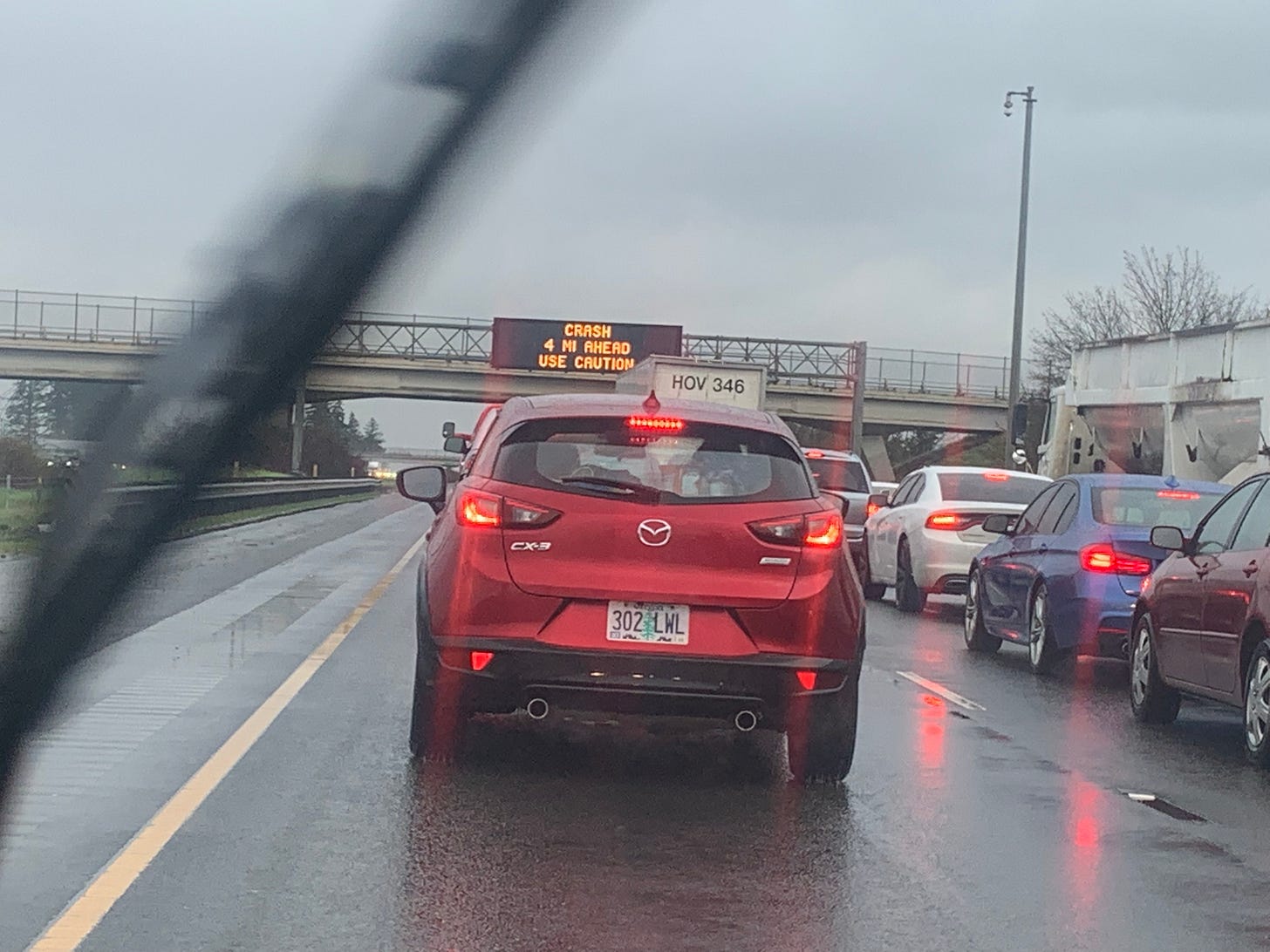Inherent complexities of transportation projects hang over I-5 bridge
The Legislature put part of the funding puzzle together for a new I-5 Columbia River bridge but many obstacles remain
The Oregon Legislature approved $1 billion in funding for a new Columbia River Bridge in its mad dash to finish the 2023 session, matching a previous commitment by the state of Washington. But, as anyone who has watched previous efforts to build a bridge knows, many obstacles remain before actual construction begins.
Though the debate over a new bridge features some unusual elements, thanks to the involvement of two states and presence of a major commercial waterway, any transportation project must navigate complex political currents. These cross-currents exist because transportation overlaps with so many other political issues. These include, but are not limited to:
Climate: Those who look at transportation primarily through this lens want projects that provide alternatives to automobile use. In some cases, they oppose highway and bridge projects entirely on the grounds that better/more roads encourage vehicle trips.
Congestion: These highway users are most concerned with easing the time and tension involved in driving, though some emphasize the twin benefit of reducing emissions.
Socio-economic impact: Many past highway projects negatively affected low-income and minority neighborhoods. Regardless of the reasons for those decisions – whether there were legitimate traffic-flow advantages with the selected path or the choices were influenced by a desire to protect other neighborhoods – it’s reasonable to expect new projects to treat affected residents fairly.
Cost: All types of transportation infrastructure are expensive. Availability of matching federal funds often influences timing and design of structures, as is the case with the I-5 bridge. Voters’ desire for transportation improvements often exceeds their desire to pay for them. And some types of funding, i.e., tolling, are particularly unpopular in Oregon.
Aesthetics: Few would claim this as their No. 1 goal for transportation projects, but it often becomes a significant discussion point and sometimes has a major impact on the final design of a project. That’s especially true of high-profile projects such as the I-5 bridge.
Adding to the complexity, these factors are inter-related. For example, choices that advance climate and socio-economic goals often increase cost. So, what is the best way to navigate this obstacle course?
A good place to start is by setting priorities and analyzing options. Which projects unquestionably are needed, as opposed to merely being desired by interest groups or economic interests that emphasize one or two of the factors above – or, worse, their self-interest? Which goals from the list above are most important and/or most relevant to the projects? What are the funding options for the project and the level of public support for those options?
By almost any calculation, a new I-5 bridge should be a priority. Even if you think commuters should use mass transit, or work from home, instead of clogging I-5, the freeway is a critical arterial for West Coast commerce. The bridge is rated “functionally obsolete.” It doesn’t meet seismic standards and could be put out of commission by an event well short of a major earthquake.
That leads to the second step of analysis: Which goals are most important and relevant? Making the bridge safe clearly is Priority 1. Increasing capacity should be second. Any bridge that opened in 1917 was not designed for 21st century traffic flow. Even if the addition of light rail and increased acceptance for work-from-home policies reduced traffic (and that’s unlikely), more lanes still would be desirable. Also, a design that allows ships to pass underneath is mandatory.
That’s a lot of factors to balance before getting to contentious issues such as whether to include light rail, whether to charge tolls (and if not how to pay for it), and how much emphasis to place on aesthetics. Light rail is highly desirable, even with current concerns about declining ridership. The bridge should be designed with at least the next 50 years in mind. The post-Covid dip in demand for light rail likely will be short term. As to aesthetics, well, it would be nice for the bridge to look better than the only other Columbia River bridge in the Portland area, the plainer-than-plain Glenn Jackson bridge. But with interest rates high and the bridge’s condition deteriorating, this is not the time to seek to make architectural statements.
Can the two states agree on a design and funding plan given all the contradictory voices involved in the process? History says no. But present reality says there’s no choice. It’s been 10 years since the last serious effort to approve a bridge plan. We can’t afford to wait another decade.
Mark Hester is a retired journalist who worked at The Oregonian for 20 years in positions including business editor, sports editor and editorial writer.




